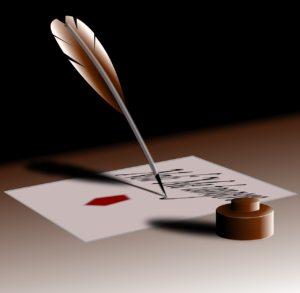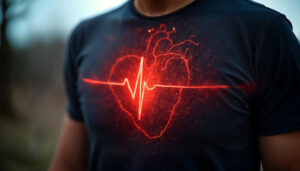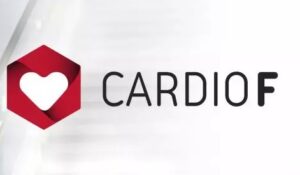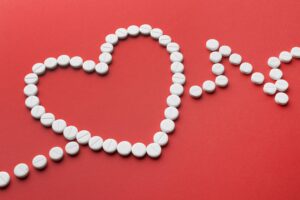Myocardial perfusion imaging or stress MIBI scan

The treadmill test is a cardiology examination that allows for the indirect evaluation of blockages in the coronary arteriesThe two coronary arteries, the right and the left, form the blood network that supplies the heart with oxygen and nutrients. They are located directly on the surface of the heart and branch into smaller vessels that.
It also assesses cardiovascular fitness.
Easy to Perform
The treadmill test is an easy-to-perform examination that provides a lot of information.
It can be considered the “gateway” examination for checking the presence or absence of blockages in the coronary arteriesThe two coronary arteries, the right and the left, form the blood network that supplies the heart with oxygen and nutrients. They are located directly on the surface of the heart and branch into smaller vessels that.
Some Examinations maybe Inconclusive
For various reasons, it is possible that the treadmill test may be unsatisfactory:
- Insufficient effort to accelerate the heart rate to the required level;
- Baseline electrical anomalies on the electrocardiogram (ECG), making conclusions impossible;
- Doubtful electrical irregularities, with no possible conclusion;
- Etc.
However, your doctor may request a complementary examination afterward. The same applies to an abnormal treadmill test result that your doctor may want to clarify later with these same complementary examinations.
One of these complementary examinations is the treadmill test accompanied by an injection of a radioactive tracer, which serves to check, through images, the state of the bloodBlood is composed of red blood cells, white blood cells, platelets, and plasma. Red blood cells are responsible for transporting oxygen and carbon dioxide. White blood cells make up our immune defense system. Platelets contribute to blood flow in the heart muscle. This examination is called “myocardial perfusion imaging,” “stress MIBI scan,” or “MIBI with treadmill.”

An Oxygen Detective in the Heart Muscle
The test is performed using a radioactive tracer that ‘follows the path’ of oxygen in the heart muscle. Ce marqueur se fixe aux cellules musculaires actives du cœur au moment où il est introduit dans la circulation sanguine. Il demeure fixé pendant un petit moment, le temps de prendre les photos à l’aide d’un appareil d’enregistrement de la radioactivité myocardique.

What we See


Useful
This screening test helps determine whether chest pain or other suspicious symptoms are of cardiac origin. It is also useful for monitoring the progress of a patient known to have stable coronary arteryThe two coronary arteries, the right and the left, form the blood network that supplies the heart with oxygen and nutrients. They are located directly on the surface of the heart and branch into smaller vessels that disease, meaning they have stable atheromatous plaques in their coronary arteriesThe two coronary arteries, the right and the left, form the blood network that supplies the heart with oxygen and nutrients. They are located directly on the surface of the heart and branch into smaller vessels that.
The test does not allow visualization of the coronary arteriesThe two coronary arteries, the right and the left, form the blood network that supplies the heart with oxygen and nutrients. They are located directly on the surface of the heart and branch into smaller vessels that themselves or determine the percentage of blockage in these arteries. However, it helps assess the impact of arterial blockages on the oxygen supply to the heart muscle.
An Indirect Way to Assess Coronary Artery Function
This examination helps determine, indirectly, if there are significant obstructions in the coronary arteriesThe two coronary arteries, the right and the left, form the blood network that supplies the heart with oxygen and nutrients. They are located directly on the surface of the heart and branch into smaller vessels that. In other words, it checks if cholesterolCholesterol is essential for the proper functioning of the human body, but it can also have harmful effects if present in excess. >> plaques are large enough to limit the distribution of oxygen to the heart muscle.
Need an Appointment
An appointment is required for this examination.

Easy Examination
Myocardial perfusion imaging is an easy examination.
The Instructions;
- You will need to bring an up-to-date list of the medications you are taking, as these will be reviewed before starting the examination.
- You must fast (no food or drink, except water) for at least 3 hours before your appointment.
- Continue taking the medications prescribed by your doctor, unless otherwise instructed. You may be asked not to take your morning doses. Follow the instructions given by the nuclear medicine department.
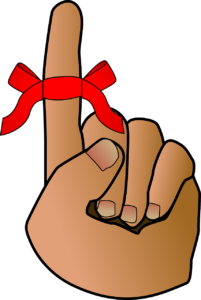
Possible Side Effects
The tracer has no side effects, except for a low level of radioactivity that persists for a few hours. This is harmless to those around you.
How is the Examination Conducted?
The examination consists of two phases: a resting phase and an exercise phase.
According to the protocol at your hospital, both phases may be conducted on the same day or over two days. This important information will be provided to you in advance.
If the examination is conducted on the same day, plan to spend 3 to 4 hours at the hospital.
PHASE 1: INJECTION AT REST
Preparation:
You must fast before receiving the injection at rest.
You may take all your morning medications unless otherwise advised by your doctor.
No other preparation is required.
Reception
The nuclear medicine reception welcomes you and asks for your requisition, if they do not already have it.
Verifications
The nuclear medicine technologist verifies with you if your preparation is adequate and if your questionnaire has been properly filled out in advance.

Undress the Upper Body
You will be asked to undress the upper part of your body and put on a hospital gown.
Plastic Catheter in a Vein
A catheter is inserted into a vein in your arm.
It is a small plastic tube that remains in place throughout the examination and allows for the injection of the radioactive tracer.

Injection of Tracer at Rest
At this point, you receive an injection of a slightly radioactive substance.
This injection of the radioactive tracer, which “follows the traces” of oxygen in the heart muscle, is used to assess the oxygenation of the heart at rest.

Waiting Period
After the injection, you will return to the waiting room because a period is necessary to allow the radioactive tracer to circulate and bind to the heart muscle cells.
During this time, if the delay is short, you will need to remain fasting. However, if the delay is long, you will be allowed a light snack.
It is important to follow the instructions given to you in this regard

Taking the Images of your Heart
After this waiting period, you will be called to have images of your heart taken at rest.
To capture these images, you will lie down on an examination table, and several electrodes (small sensors for the electrical activity of your heart) will be placed on your chest to record your heart rate. A camera will rotate around your chest for about 15 minutes.
You will need to remain still for the entire duration of the image capture.

Afterward, you will return to the waiting room so that the technologist can ensure the technical quality of the images before proceeding to the next step.
It may sometimes be necessary to retake these images (about 15% of the time). This can be due to patient movement during the image capture or because the heart is not optimally visible.
You may be asked to drink a little water or consume some full-fat milk and walk around before taking this second set of images.
It is important to know the appearance of your heart at rest. For example, if you have had a heart attack before, the images of the heart at rest will show the area where oxygenation is reduced or absent.
STEP 2: INJECTION DURING EXERCISE ON TREADMILL
This step may be performed on the same day as the first or spread over a second day.
During this second phase of the examination, you will undergo a treadmill test, usually in the cardiology department.
On the day of your examination, you should wear comfortable shoes. Sandals and high-heeled shoes are not allowed for safety reasons.
You will be asked to remove all clothing from the upper part of your body and put on a hospital gown.
You will lie down on a bed for the placement of electrodes. These sensors, securely attached to your skin, record the electrical activity of your heart throughout the examination. The technologist will need an up-to-date list of your medications to complete the information in your file.
For a Better Electrical Contact
Keratin on our skin can diminish the amplitude of the heart’s electrical signals. To help better capture this electricity, the skin will be lightly abraded with a small piece of sandpaper.
A catheter will be placed in a vein in your arm to allow the injection of the radioactive tracer (MIBI) during the treadmill test. Ten electrodes will be attached to your chest, along with a bloodBlood is composed of red blood cells, white blood cells, platelets, and plasma. Red blood cells are responsible for transporting oxygen and carbon dioxide. White blood cells make up our immune defense system. Platelets contribute to blood pressure cuff on the arm opposite the catheter. The technologist will explain the procedure for this second phase.
An ECG will be performed. Your bloodBlood is composed of red blood cells, white blood cells, platelets, and plasma. Red blood cells are responsible for transporting oxygen and carbon dioxide. White blood cells make up our immune defense system. Platelets contribute to blood pressure and heart rate will be measured.
A doctor will review this information in consideration of your health status and the questionnaire you previously completed. They may ask you additional questions and perform a brief examination of your heart and lungs.
And It's Time for the Treadmill
Throughout this phase of the examination, your bloodBlood is composed of red blood cells, white blood cells, platelets, and plasma. Red blood cells are responsible for transporting oxygen and carbon dioxide. White blood cells make up our immune defense system. Platelets contribute to blood pressure and heart rate will be monitored and recorded, and electrocardiograms (ECGs) will be taken.
Next, you will move to the treadmill. When the doctor deems it appropriate, typically at the peak of exertion or close to it, the radioactive tracer will be injected. You will continue on the treadmill for approximately one additional minute after the injection.

Second Waiting Period
When this phase is complete, another waiting period begins, which typically lasts 1 hour. You will be directed to the nuclear medicine department for image acquisition.
During this waiting time, you may be offered a light meal. It is important not to have a heavy meal, as a full stomach can obstruct the view of the heart.
It is crucial to follow the instructions you are given carefully.

Taking the Images of your Heart Representing Exercise
After the waiting period, you will be called in for the second image acquisition.
Just like the first time, a camera will rotate around your chest for about 15 minutes.
Once these images are obtained, you will return to the waiting room to allow the technologist to ensure the quality of the images before you leave.

The images obtained after the injection of the stress MIBI will be compared to those taken at rest. If there is no difference between the two phases, the test will be considered negative for significant coronary obstructions.
If a region of decreased perfusion is observed only on the stress images, while the rest images show normal perfusion, this could indicate a lack of oxygen in a region of your heart during exertion. Depending on the extent and/or severity of the difference between the two sets of images, further tests may be necessary.
Your cardiologist will discuss this possibility with you.


And it’s done
After this second recording, you can change back into your regular clothes and leave.
Imperfect Examination
The examination is not perfect and may require further studies using other modalities afterward (echocardiography, coronary angiography, or others).
The results are sent to your doctor
The results are communicated to the doctor who asked for the exam.
You May Ask for an Additional Copy of the Report for another Doctor
You can request that a copy of the results be sent to another doctor. You just need to provide their name and contact information to the staff. You can do this at the beginning or the end of your examination.
